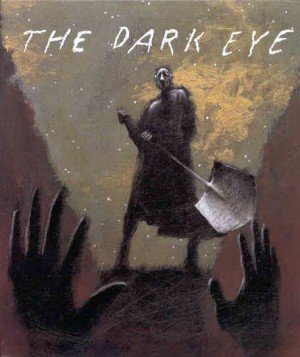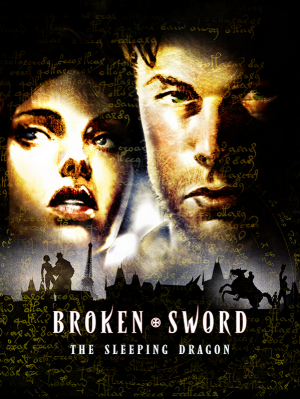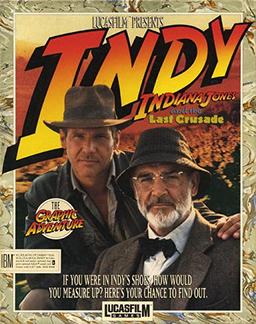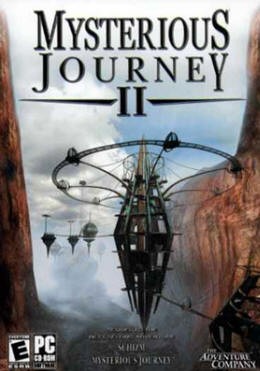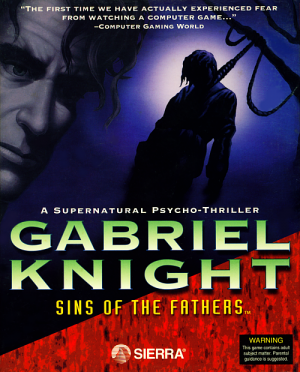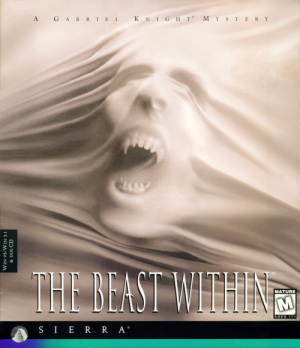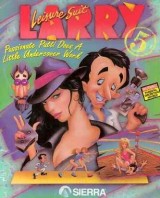Review for D

Back in the mid 1990s, a development company named WARP Inc. made a series of games starring the same “virtual actress”, a character model who always played a role of someone named Laura, though never exactly the same person twice. In keeping with the company name, the games had some decidedly strange characteristics and the first game in the series, D, was no exception.
In D, Laura “plays” Laura Harris, daughter of the eminent doctor Richter Harris. It is 1997 (the near future when the game was made) and in his Los Angeles hospital, Laura's father has apparently become insane. He has gone on a murderous rampage and barricaded himself within the hospital, leaving the police powerless to intervene. On hearing of this, Laura rushes to the scene where she is permitted to enter the hospital alone. Amidst the carnage she comes across a peculiar warping of reality which transports her to an alternate world.
Most of the backstory is presented in a typical fashion by means of an opening cutscene. Rather less typically, the cutscene then turns into what can only be described as a game trailer. This depicts a large number of upcoming scenes from the game and contains potential spoilers to at least two of the puzzles. As a promotional item this might have been beneficial but its presence at the start of the game is a trifle bizarre. The player is then presented with the game start menu and the more astute will notice it consists solely of “PRESS ENTER”. This is because the game has no user-definable options and, more crucially, no save game system. The entire game must be played through in one session. Fortunately, the manual makes it clear how much time you need to set aside. Laura enters the hospital at 3:00. You have until 5:00 before the portal to the other world closes, giving you two real-time hours to solve the mystery.
Despite regularly being described as survival horror, D has no death sequences. Most of the game is set in an environment akin to an old castle that is well-stocked with desiccated corpses, many of whom appear to be the victims of sadistic traps. Laura comes close to falling foul of these traps herself, as spiked walls lunge at her and a large boulder pursues her down a stairwell. Whilst creating an illusion of danger, however, Laura’s successful evasion of these death traps is handled automatically.
The game uses a first-person, node-based navigation system that is controlled with the arrow keys. There is no on-screen cursor, but for the most part movement is simple, with clear routes you can follow in each room and only three directions you can move from your current spot. However, the placement of nodes sometimes leads to unintentional mazes as you try to maneuver to specific points in apparently open rooms. A simple keystroke brings up a small inventory containing a watch (showing the current game time), a compact (an in-game hint system) and any other items you’ve acquired. Laura can also interact with a handful of environmental objects by pressing the space bar. The PC version also includes a pause menu, allowing the player to answer calls of nature without wasting any of the precious limited time. Owners of console versions were not so lucky in this respect.
The graphics are, for the time, of extremely high quality. Whilst they may not stand up well against modern games, they meet a standard that would normally have been restricted to cutscenes in their own era. In particular, the 3D modelling of the lead character is exceptional. She is able to achieve a decent variety of facial expressions (though this isn’t always a plus) and has realistic body movement. The only real flaw is her hair, which must have astonishing amounts of gel in it given how rigid it is. There are also some ambitious rippling water effects that are carried off well, plus a handful of reflective surfaces that depict Laura realistically. The downside to this level of detail is that the viewing window is reduced to little more than half the size of the screen, but this does not greatly affect the gameplay. The transitions between locations provide a realistic swaying motion as Laura makes her way node to node, as if she was actually walking between the two points.
The game frequently switches views to third-person when performing actions or when certain set scenes are triggered. This gave the developers a chance to show off their ability to create realistic facial expressions. Laura gasps. She looks quizzical. She shakes her head in sadness and disbelief. Unfortunately, she is also one of the worst over-actors I have ever seen. A recurring scene in the game is her father trying to communicate with her by means of a projection that always floats in the air slightly in front of and above her. The first time this happens, Laura quite reasonably looks around for the source of the voice (briefly reverting to first-person to showcase how well the look-around-at-scenery effect works) before spotting the projection with a startled gasp. If by the fifth time she does this you’re not screaming “For goodness sake, look up you stupid bint!” then you’re a better person than I.
Sound is sparsely used in the game but generally to good effect. There is a steady background ambient throughout that is much less intrusive than a full musical score. Mechanisms make realistic noises and Laura’s steps echo (though strangely, only when she goes up and down stairs). Voice work is limited to the paternal apparitions and occasional gasps from Laura, but this is for the best as the performances are less than stellar. The game also plays music any time a significant event occurs. Like Laura, this can get a bit over-theatrical at times, playing dramatic chords to announce a new disturbing scene.
The puzzles are all fairly straightforward. There is no facility for combining inventory items and you only ever have access to a handful of locations at any one time. The last object you acquired is the one actively selected when opening the inventory, and it's invariably the item you need, which removes the standard search and selection in most adventures. As a result, most puzzles can be solved by merely wandering around the available locations resolutely looking at everything if no inspiration strikes. Any codes or lock combinations required are "hidden" in plain sight, including one that is quite literally painted in digits six inches high on a door.
With this degree of simplicity, it is unlikely that any moderately experienced adventure gamer will need to resort to the in-game hint system, which is good, since it leaves a lot to be desired. The compact in Laura’s inventory from the start has magical abilities (Internet sources say it was a gift from her mother but neither the game nor the manual explain its origins) and looking in it shows you a picture of where you need to go next. However, this is only useful if you’ve actually seen the location shown and can recognise it from the small depiction presented, and after each use the compact gains a crack and eventually become useless.
Since the puzzles are unlikely to slow down any experienced adventurer, it appears that the designers have taken other steps to impede the player and push them nearer to the time limit. Throughout her journey in this world of horror, Laura walks at a speed for which the title “snail’s pace” is only a slight exaggeration. The latter part of the game includes a rotating room where, to get all the items and information you need, you have to perform the rotating action no less than an astounding 30 times. (Even on a second play through where I didn’t need information, I could only get this down to 18.) This part of the game also includes a quick time sequence that gamers of my vintage will recognise as having its origins in the arcade game Dragon’s Lair, and since popularized again in more recent games such as Fahrenheit.
The plot is not overly complex. For most of the game you simply wander through this surreal world with only the occasional clue to the overall story. Rather than spend time on fleshing out the story, the game is mostly content to just scare you with horrific sights and apparently life-threatening situations. There is an additional backstory involving Laura’s past (which was toned down from the Japanese original due to its controversial distastefulness) presented in visions brought on by strange hallucinogenic bugs that Laura happens across. It’s not particularly hard to work out what the "D" of the title refers to, but you’ll only get the full story in the clumsy exposition at the end of the game.
Ultimately, D isn’t really a game I can recommend anyone searching for. The plot is uninvolving and the tactics used to slow the player down can make parts of the game feel like a chore. It is also far too short with minimal replay value. The game manual hints at multiple endings, but in reality there are only three. To obtain two of the endings (the “good” and “bad” ones), you will need to play through the entire game, only changing the decision you make at the end. The third ending occurs when the time limit runs out, and the only way most people will achieve that is by waiting for it, as even on my first ever play through I had a good 15 to 20 minutes to spare at the end. Only a completist or a reviewer will actually go for all three, and most players will just go straight for the good ending (the best choice being pretty obvious at the end)
If the game has any real value at this point, it is as a snapshot of the time it was made. This game exhibited some technical advances that went on to be better implemented in subsequent games. As such it might be worth picking up if you happen across a copy as a curio of that past age. I was able to run the PC version of the game under DOSBox 0.72 with default settings, so at least technical compatibility isn't an issue. The game was also made for the 3DO, Sega Saturn and Sony Playstation, which serves as a reminder of just how old the game really is. If you’ve got one of those old consoles lurking in the attic, then you could squeeze a couple hours more use out of it with this game. Everyone else is probably better off giving it a miss, as it's roughly deserving a score little better than its title.



_capsule_fog__medium.png)





